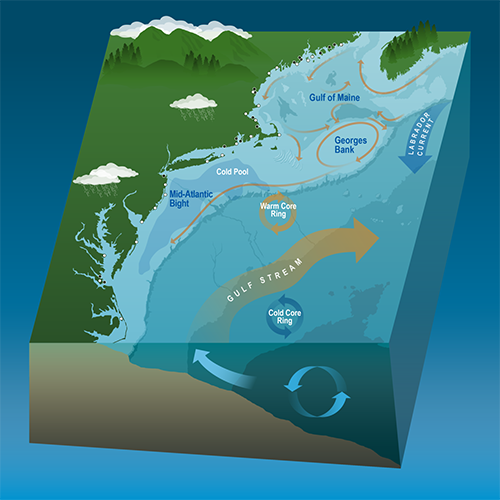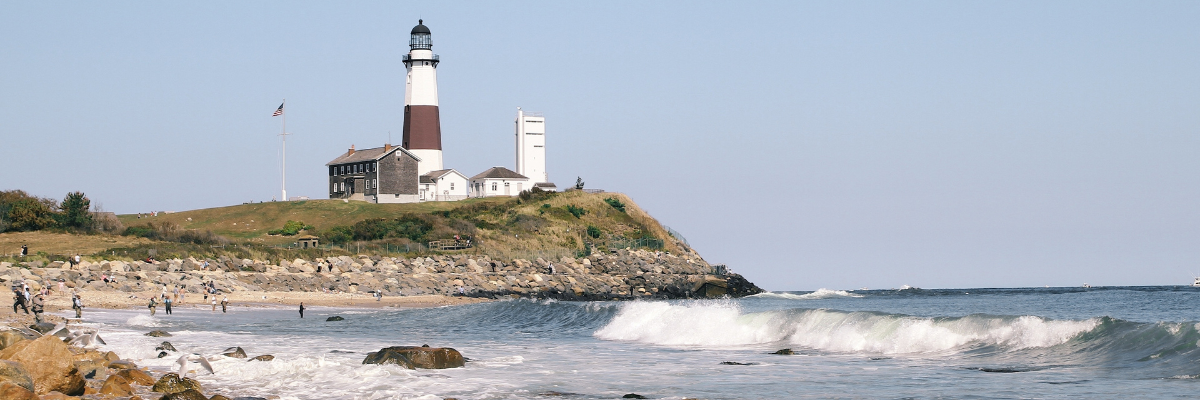The Gulf of Maine forms the most northerly component of the Northeast Large Marine Ecosystem, extending northward from Georges Bank and east to Canadian waters.
Over 3300 species marine plants and animals can be found in Gulf of Maine and Georges Bank, including over 650 fish species that are either permanent or transient residents to the region (Valigra 2010; GOMC 2010), 32 marine mammal species, and over 180 species of seabirds. This high species richness is supported by seasonal phytoplankton blooms and high annual primary productivity. Flagship commercial species include the American lobster (Homarus americanus), Atlantic cod (Gadus morhua), white hake (Urophycis tenuis), pollock (Pollachius pollachius), and sea scallop (Placopectin magellanicus) among others. Frequently seen marine mammals and turtles include the North Atlantic right whale (Eubalena glacialis), humpback whale (Megaptera novaeangliae), harbor porpoise (Phocoena phocoena), white-sided dolphin (Lagenorhynchus acutus), harbor seal (Phoca vitulina), loggerhead (Caretta caretta), Kemp’s ridley (Lepidochelys kempii), and leatherback (Dermochelys coriacea), all of which are protected by US law(GOMC 2010).

References:
- Gulf of Maine Council on the Marine Environment (GOMC). State of the Gulf of Maine Report. 2010. http://www.gulfofmaine.org/state-of-the-gulf/docs/the-gulf-of-maine-in-context.pdf
- Valigra L. Surprising species diversity revealed: Census shows ‘huge reservoir of information about life’ in Gulf of Maine. 2006. Gulf of Maine Times. 10(1). http://www.gulfofmaine.org/times/spring2006/species2.html
- https://www.nefsc.noaa.gov/ecosys/ecosystem-ecology/phytoplankton.html
- NEFSC. NE SOE. 2018
